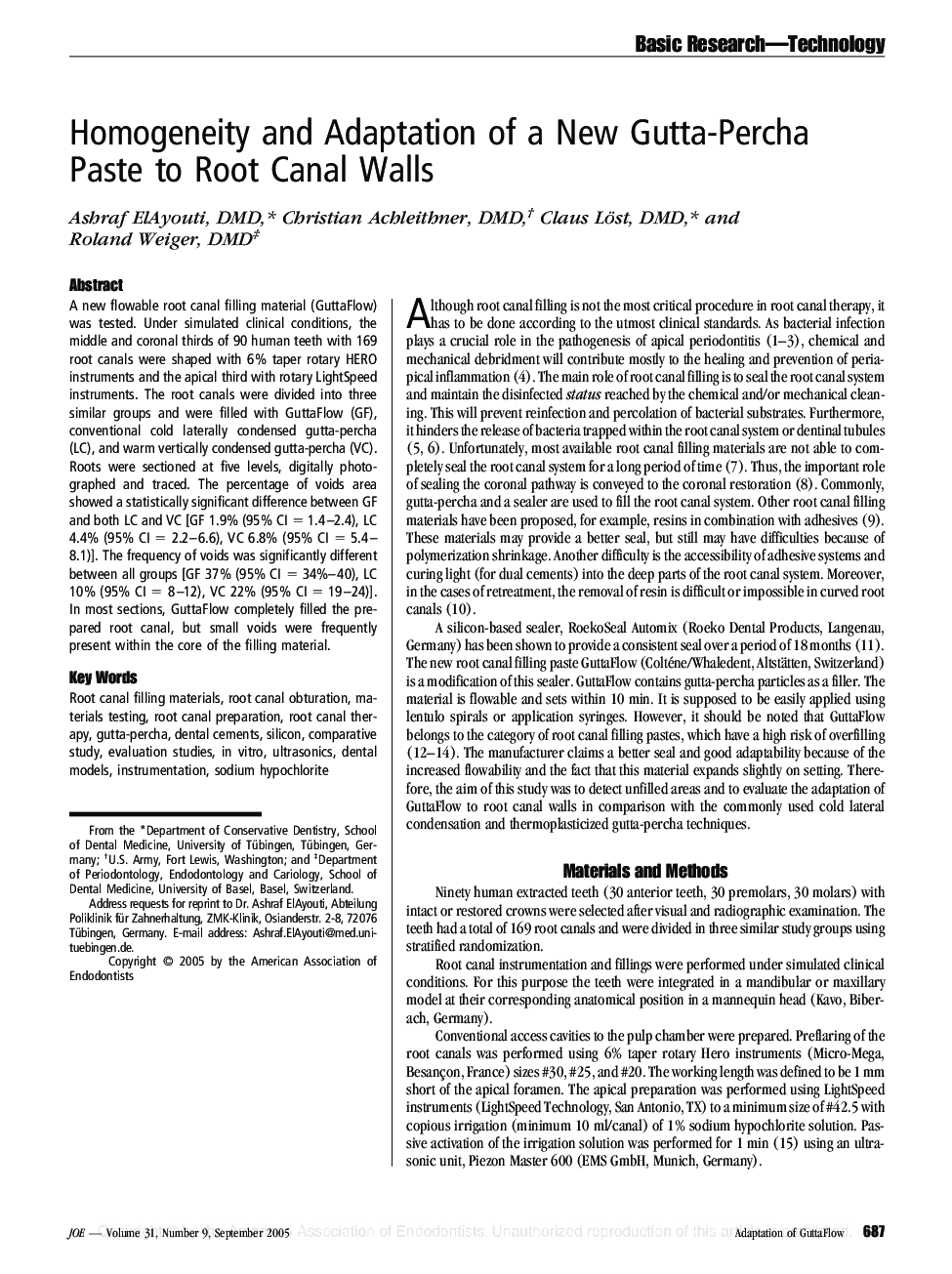| Article ID | Journal | Published Year | Pages | File Type |
|---|---|---|---|---|
| 9211661 | Journal of Endodontics | 2005 | 4 Pages |
Abstract
A new flowable root canal filling material (GuttaFlow) was tested. Under simulated clinical conditions, the middle and coronal thirds of 90 human teeth with 169 root canals were shaped with 6% taper rotary HERO instruments and the apical third with rotary LightSpeed instruments. The root canals were divided into three similar groups and were filled with GuttaFlow (GF), conventional cold laterally condensed gutta-percha (LC), and warm vertically condensed gutta-percha (VC). Roots were sectioned at five levels, digitally photographed and traced. The percentage of voids area showed a statistically significant difference between GF and both LC and VC [GF 1.9% (95% CI = 1.4-2.4), LC 4.4% (95% CI = 2.2-6.6), VC 6.8% (95% CI = 5.4-8.1)]. The frequency of voids was significantly different between all groups [GF 37% (95% CI = 34%-40), LC 10% (95% CI = 8-12), VC 22% (95% CI = 19-24)]. In most sections, GuttaFlow completely filled the prepared root canal, but small voids were frequently present within the core of the filling material.
Keywords
Related Topics
Health Sciences
Medicine and Dentistry
Dentistry, Oral Surgery and Medicine
Authors
Ashraf DMD, Christian DMD, Claus DMD, Roland DMD,
